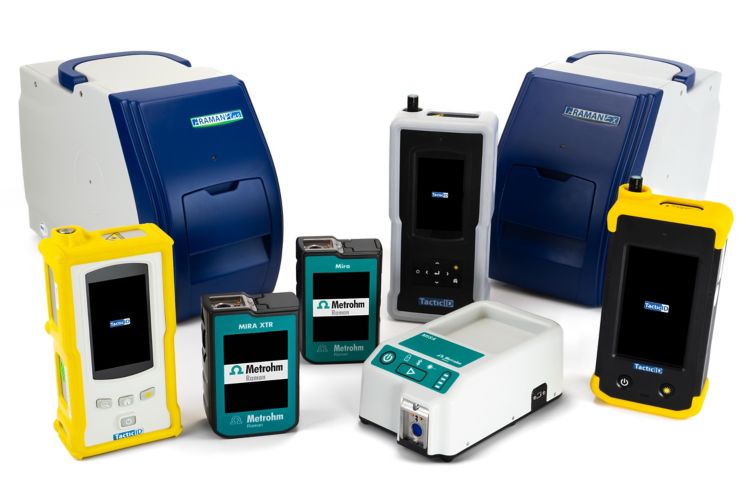Raman spectroscopy is a powerful analytical technique used to understand the molecular composition of materials. Central to this technology is the Raman spectrometer, an instrument that provides insights into the vibrational, rotational, and other low-frequency modes in a system. This non-destructive technique has revolutionized various fields, from chemistry and material science to biology and forensic science. This article will explore the fundamentals of Raman spectrometry, how it works, and its diverse applications.
What is Raman Spectroscopy?
Raman spectroscopy is based on the Raman effect, named after the Indian physicist C.V. Raman, who discovered it in 1928. The technique involves shining a monochromatic light source, usually a laser, onto a sample. Most of the light scatters elastically (Rayleigh scattering), meaning it has the same energy as the incident photons. However, a small fraction of the light scatters inelastically, meaning the scattered photons have different energy levels. This inelastic scattering, known as Raman scattering, provides information about the vibrational modes of the molecules in the sample. Get more details visit https://zaitechno.com/product/handheld-raman-spectrometer/
The shifts in energy correspond to the vibrational frequencies of the chemical bonds in the sample. By analyzing these shifts, scientists can determine the molecular structure, chemical composition, and interactions within the material.
How Does a Raman Spectrometer Work?
A Raman spectrometer typically consists of several key components:
- Laser Source: The laser provides a monochromatic light source that illuminates the sample. Common lasers used in Raman spectroscopy include those emitting in the near-infrared, visible, or ultraviolet regions.
- Sample Holder: The sample can be in various forms, such as solids, liquids, or gases. It is placed in the path of the laser beam, where the Raman scattering occurs.
- Optics and Filters: These components direct the laser beam onto the sample and collect the scattered light. A notch or edge filter is used to block the intense Rayleigh scattered light while allowing the weaker Raman scattered light to pass through.
- Spectrometer: The collected light is dispersed by a diffraction grating or prism and then directed onto a detector. The spectrometer measures the intensity of the scattered light as a function of its wavelength, creating a Raman spectrum.
- Detector: Common detectors include charge-coupled devices (CCDs) or photodiodes, which convert the light into an electrical signal that can be processed and displayed as a spectrum.
- Data Analysis Software: The resulting Raman spectrum is analyzed to identify the molecular fingerprints of the sample. Peaks in the spectrum correspond to specific vibrational modes of the molecules, allowing for qualitative and quantitative analysis.
Applications of Raman Spectrometry
Raman spectroscopy is a versatile technique with applications across various scientific disciplines:
- Chemistry and Material Science:
- Chemical Identification: Raman spectroscopy is used to identify and characterize chemical compounds, including complex mixtures and unknown substances.
- Material Characterization: It helps in understanding the molecular structure, crystallinity, and phase transitions of materials, making it invaluable in research and development.
- Biology and Medicine:
- Biomolecular Analysis: Raman spectroscopy can analyze biological samples like cells, tissues, and proteins, providing insights into their molecular composition and interactions.
- Medical Diagnostics: Emerging applications include using Raman spectroscopy for non-invasive cancer diagnosis, detecting pathogens, and monitoring glucose levels in diabetic patients.
- Pharmaceutical Industry:
- Quality Control: Raman spectroscopy is used for the identification of raw materials, monitoring drug formulations, and ensuring the consistency of pharmaceutical products.
- Polymorph Analysis: It helps in identifying different polymorphic forms of a drug, which is crucial for its efficacy and stability.
- Forensic Science:
- Substance Identification: Raman spectroscopy is employed in forensic investigations to identify illicit drugs, explosives, and trace evidence such as fibers or residues.
- Counterfeit Detection: It is used to detect counterfeit products, including pharmaceuticals and luxury goods, by analyzing their molecular signatures.
- Environmental Science:
- Pollution Monitoring: Raman spectroscopy can detect and quantify pollutants in water, air, and soil, making it a valuable tool for environmental monitoring.
- Microplastics Analysis: It is used to identify and characterize microplastics in the environment, contributing to studies on pollution and its impact on ecosystems.
Advantages and Limitations
Raman spectroscopy offers several advantages:
- Non-Destructive: The technique does not require sample preparation, preserving the integrity of the sample.
- Minimal Interference: It can be used on samples in various states (solid, liquid, or gas) without significant interference from water, making it ideal for biological studies.
- High Specificity: Raman spectroscopy provides detailed molecular fingerprints, allowing for precise identification of substances.
However, there are limitations:
- Weak Signal: Raman scattering is inherently weak, often requiring sensitive detectors and long acquisition times.
- Fluorescence Interference: Some samples may exhibit fluorescence, which can overshadow the Raman signal, complicating the analysis.
Conclusion
Raman spectrometers have become indispensable tools in scientific research and industrial applications. By unlocking the molecular secrets of materials, they provide critical insights that drive innovation and discovery across multiple fields. Whether it’s identifying unknown compounds, diagnosing diseases, or monitoring environmental pollutants, Raman spectroscopy offers a powerful method for exploring the molecular world. As technology continues to advance, the applications of Raman spectroscopy are likely to expand, offering even more opportunities to understand and manipulate the materials that make up our worlds.


